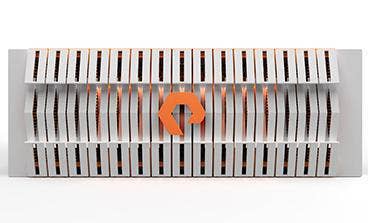Pure Storage Adds Replication To FlashBlade File, Object Storage Platform
The addition of both file and object replication via the latest release of Pure Storage's Purity FB operating system is aimed at making the array more suitable for analytics and other workloads requiring resiliency.

All-flash storage array pioneer Pure Storage Monday updated the operating system of its FlashBlade with file and object replication, filling in a hole in its capabilities one channel partner said needed to be filled.
FlashBlade is Pure Storage's array for scale-out fast unstructured file and object storage. The Mountain View, Calif.-based company also offers its FlashArray line for high-performance, all-NVMe block data storage.
Pure Storage is making its Purity FB 3.0, its latest operating system for its FlashBlade arrays, available to update existing hardware, said Brian Schwarz, vice president of product management for the FlashBlade line.
[Related: Pure Storage CEO Charles Giancarlo On Investing Heavily To Tie On-Prem To Cloud]
"This opens a whole bunch of new applications and use cases, including modern analytics with object storage and Splunk and Vertica," Schwarz told CRN.
The two key pieces of the Purity FB 3.0 operating system are file and object replication. The file replication allows scalable snapshot-based protection between two FlashBlade arrays, while the object replication allows data objects to be replicated between two FlashBlades or a FlashBlade and Amazon Web Services, he said.
The question of replication came up in early conversations around FlashBlade, said Steve Asmussen, data center solutions architect at CompuNet, a Meridian, Idaho-based solution provider and early Pure Storage channel partner.
"It's a topic that came up frequently," Asmussen told CRN. "A lot of customers expect replication to be in their storage platforms. It's not common to not have replication."
For the U.S. Northwest, analytics is not yet a big push for partners like CompuNet, Asmussen said. However, the addition of replication to FlashBlade will make the array a more important platform for high-performance computing, which really requires the feature to ensure resiliency, he said.
"Replication makes the architecting of solutions easier," he said. "Customers can use FlashBlade for production and at the remote site."
Adding replication to FlashBlade will help the line better compete with Dell EMC's Isilon, NetApp, Qumulo, and other file-based systems, Asmussen said.
"Not having replication often takes FlashBlade off the table and doesn't align with what customers are trying to architect," he said.
The Purity FB 3.0 operating system in February was made available during the company's sales kickoff to all FlashBlade customers as part of Pure Storage's Evergreen support service, Schwarz said.
The new replication capabilities will help drive channel partner sales of solutions such as rapid restore of data, anti-ransomware, electronic design automation, software development, artificial intelligence, and wider deployment of modern analytics, Schwarz said.
"FlashBlade is used with a wide variety fo modern analytics applications," he said. "Many of those applications, including Vertica and Splunk, are moving to focus on object storage."